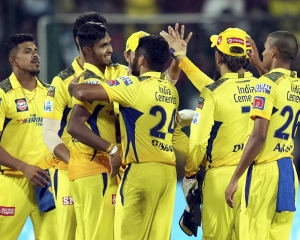At a time when India is struggling with the glacier-triggered flash floods in upper Himalayan regions, a recent study by the IIT Gandhinagar has predicted a 7-8-fold increase in the frequency of flash droughts towards the end of this century. It has blamed the concurrent occurrence of extremely dry and hot periods during monsoon and greenhouse gas emissions to the flash droughts in-waiting.
“This would pose a major risk to crop production due to soil moisture depletion and intra-seasonal monsoon variation,” said the study
“Anthropogenic warming and intraseasonal summer monsoon variability amplify the risk of future flash droughts in India”, published in the journal Climate and Atmospheric Science.
Flash droughts are droughts that intensify more rapidly than normal, posing a risk to agriculture, ecosystems and water availability.
Researchers explained that while the conventional droughts take months and sometimes even years to develop to full intensity, flash droughts on the other hand develop at an unusually fast rate due to extreme weather conditions and persist from a few weeks to some months. Such droughts can be localised to a specific region or can become widespread and affect a large part of the country.
Researchers Vimal Mishra, Shanti Shawrup Mahto and Saran Adhar reached to this conclusion after investigating the causes of flash droughts in India between 1951 and 2016. Based on the findings, the researchers predict an increase in the frequency of flash droughts. They pointed out the worst flash drought in the observed (1951-2016) climate occurred in 1979, affecting over 40 per cent of India.
“The frequency of concurrent hot and dry extremes is projected to rise by about five-fold, causing an approximately seven-fold increase in flash droughts like 1979 by the end of the 21st century.
“The increased risk of flash droughts in the future is attributed to intraseasonal variability of the summer monsoon rainfall and anthropogenic warming, which can have deleterious implications for crop production, irrigation demands, and groundwater abstraction in India,” they said.
Flash droughts can be identified either by monitoring changes in precipitation, evapotranspiration, or soil moisture. The researchers had used a hydrology model to simulate soil moisture patterns across the country to identify the duration and extent of flash droughts.
With these and among other criteria, the researchers considered flash droughts with a minimum duration of 15 days and a maximum duration of 90 days and identified 15 flash drought events in the past. Of these, the flash drought in the year 1979 that affected 40% of the country was observed to be the most severe.
Mishra, Associate Professor of Civil Engineering, IIT Gandhinagar, and lead author of the study, recalled that in 1979, around 125 days after the onset of the monsoon season, the soil moisture was very high. But within 10 days, the soil moisture dropped very quickly as there was a dry spell and temperatures were high, with an average increase of more than 2 degrees centigrade.
“Normally, conventional droughts take months to build up. But flash droughts can occur during the monsoon season when there are long breaks in the monsoon and the temperature is high. Soil moisture dries within 1-2 weeks, causing flash droughts,” he said in the study.
To gain an understanding of how flash droughts would occur in future climates, the researchers used the same model but fed data from a global climate model, Community Earth System Model, that provides temperature and precipitation data for the year 1900-2100, to estimate soil moisture.
The influence of anthropogenic events such as greenhouse emissions, land use-land cover change and industrial aerosols were also investigated. The study found that greenhouse emissions will significantly increase the frequency of extremely hot and dry periods, which are the main drivers of flash droughts.

























